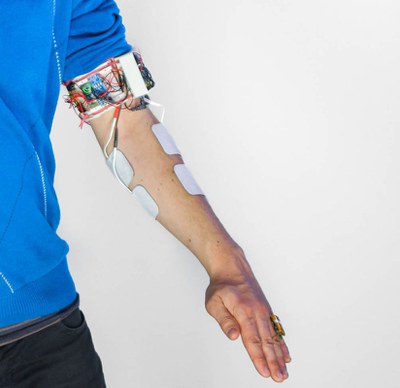
ABSTRACT
Today's interfaces are closer and closer to our body and are literally attached to it, such as mobile phones, wearable devices and virtual reality headsets. These provide a very direct and immersive interaction with virtual worlds. But what if, instead, the interfaces were "part of our body"? In this talk Pedro Lopes introduces the idea of an interactive system based on electrical muscle stimulation (EMS). EMS is a technique from medical rehabilitation in which a signal generator and electrodes attached to the user's skin are used to send electrical impulses that involuntarily contract the user's muscles. While EMS devices have been used to regenerate lost motor functions in rehabilitation medicine since the '60s, it has only been a few years since researchers started to explore EMS as a means for creating interactive systems. These more recent projects explore EMS as a means for teaching users new motor skills, increasing immersion in virtual experiences by simulating impact and walls in VR/AR, communicating with remote users and allowing users to read & write information using eyes-free wearable devices.
BIOGRAPHY
Pedro is a researcher at Prof. Baudisch’s Human Computer Interaction Lab at the Hasso Plattner Institute, Germany. Pedro's work is published at ACM CHI/UIST and demonstrated at venues such as ACM SIGGRAPH and IEEE Haptics. Pedro has received the ACM CHI Best Paper award for his work on Affordance++, several nominations and exhibited at Ars Electronica 2017. His work also captured the interest of media, such as MIT Technology Review, NBC, Discovery Channel, NewScientist or Wired. (Learn more about Pedro's work here).
